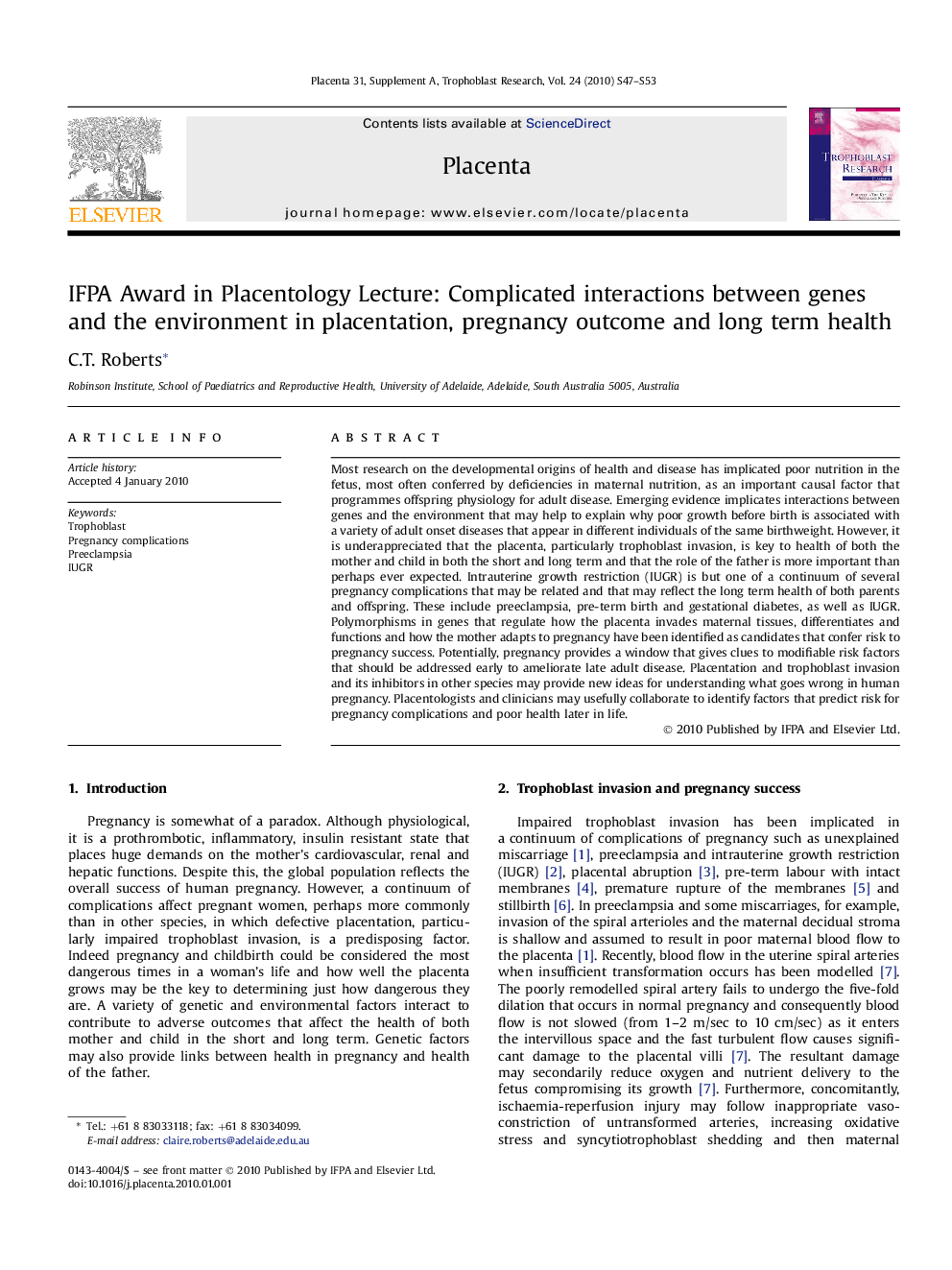| Article ID | Journal | Published Year | Pages | File Type |
|---|---|---|---|---|
| 2789988 | Placenta | 2010 | 7 Pages |
Most research on the developmental origins of health and disease has implicated poor nutrition in the fetus, most often conferred by deficiencies in maternal nutrition, as an important causal factor that programmes offspring physiology for adult disease. Emerging evidence implicates interactions between genes and the environment that may help to explain why poor growth before birth is associated with a variety of adult onset diseases that appear in different individuals of the same birthweight. However, it is underappreciated that the placenta, particularly trophoblast invasion, is key to health of both the mother and child in both the short and long term and that the role of the father is more important than perhaps ever expected. Intrauterine growth restriction (IUGR) is but one of a continuum of several pregnancy complications that may be related and that may reflect the long term health of both parents and offspring. These include preeclampsia, pre-term birth and gestational diabetes, as well as IUGR. Polymorphisms in genes that regulate how the placenta invades maternal tissues, differentiates and functions and how the mother adapts to pregnancy have been identified as candidates that confer risk to pregnancy success. Potentially, pregnancy provides a window that gives clues to modifiable risk factors that should be addressed early to ameliorate late adult disease. Placentation and trophoblast invasion and its inhibitors in other species may provide new ideas for understanding what goes wrong in human pregnancy. Placentologists and clinicians may usefully collaborate to identify factors that predict risk for pregnancy complications and poor health later in life.
